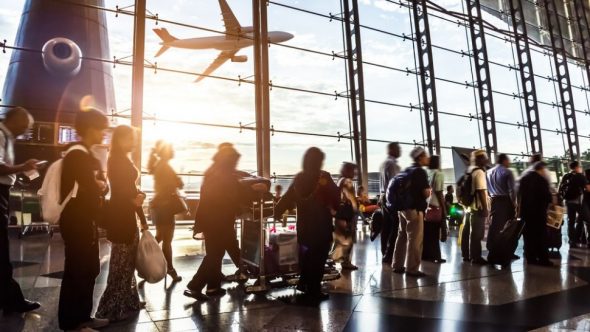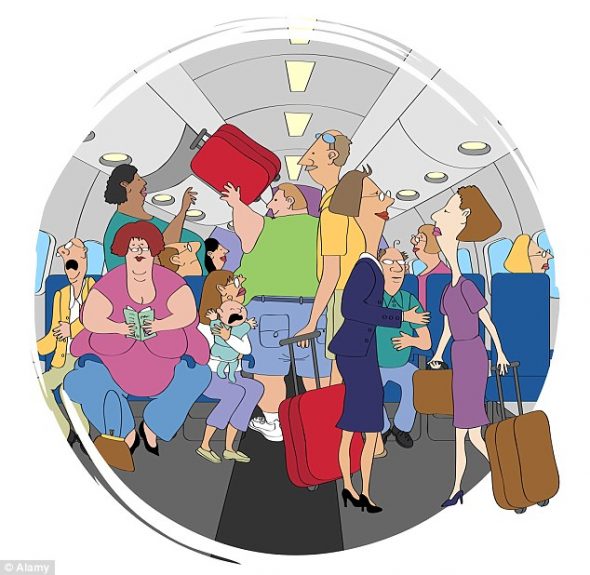Deals on air tickets are easier to find than you think, especially for trips planned for the coming winter season, according to data extracted from 60 million users of Skyscanner. In fact, January is the best time to book cheap flights in the first half of the year – both domestic and international – before travel demand and prices head into a predicted spike.
For travelers considering short or long-haul travel next year, the first two weeks of January are expected to offer the best deals for the first half of 2018:
- US domestic flights are averaging around 16 percent cheaper than the yearly average. Come March, airline tickets could potentially increase by 13 percent over the yearly average.
- International flights are potentially up to 36 percent cheaper than the yearly average in January. But in March, tickets risk an increase of up to 56 percent more expensive than the yearly average.
International destinations where Skyscanner has seen significant traveler interest are Phuket, Paris, Amsterdam, Madrid, and Edinburgh. Meanwhile, U.S. travelers are increasingly interested in Hamburg, Lyon, Bologna, and Casablanca as new destinations to explore in 2018. Five destinations already topping 2018 searches and bookings are not surprisingly New York, Los Angeles, Miami, London, and Las Vegas.
In a recent survey released through a team-p by the Airlines Recording Company (ARC) and Expedia, saving money on air travel can be a year ‘round opportunity, if you know what the patterns are.
While there are nuances by market, there are also some universal air travel pricing trends.

Busting the “Last Minute” Myth
Despite popular belief in the benefits of last-minute booking, in most parts of the world, economy fares tend to increase as departure date gets closer.
- Best booking lead time for a bargain: Booking a flight more than 30 days ahead of departure is when travelers are most likely to find the lowest Average Ticket Prices (ATPs) for economy and premium cabin air travel.
Best Day to Book a Bargain
- For most international and domestic economy flights, cheapest fares are booked on a Sunday/most expensive are booked on a Friday.
- For Premium fares, Saturdays and Sundays are the best bargain booking days.
Best Day to Start a Journey
Expedia/ARC’s tip for 2018: No matter where you’re headed, start your journey on a Friday.
- The cheapest days-of-week to start an international air journey in the economy cabin are Thursdays and Fridays. For US domestic economy flights, travelers paid lowest ATPs when they started their journey on a Friday.
- The cheapest days-of-week to start an international air journey in the premium cabin are Fridays and Saturdays.
“Business travel may typically take place during the week, but starting the trip on the weekend may help companies save on premium seats. This can turn a business trip to a “bleisure” (business/leisure) trip, improving traveler satisfaction and helping companies with their bottom line,” says Tristan Smith, Vice President of Global Transport Supply, Egencia.
What Months Offer the Best Fares?
When the experts compared ATPs paid for flights during a calendar month of flight departures and found:
- For US travelers: December had highest economy international ATPs/February had lowest; June had highest economy domestic ATPs/September had lowest.
- October had highest premium international ATPs/December had lowest. June had highest premium domestic ATPs/August had lowest.

Where is the World Traveling?
- Busiest international gateways into the US are New York, Miami, Los Angeles and Orlando, with global demand coming from Canada, Europe, Asia and a range of Latin America origins.
- Cancun remains a top international destination for US travelers.
- Travel from and within Asia Pacific is a trend: Shanghai, Taipei and Seoul in particular are fueling intra-Asia travel as well as inbound travel to key European airports/cities.
- Europe remains a substantial contributor to global air travel, with London and Paris key entry points to the region for international travelers.
- The Middle East is an important hub for travel between Europe and Asia Pacific (APAC) travel.
Insights: Premium Flights
Premium domestic and international tickets issued on Saturdays and Sundays tended to have the lowest ATPs across geographic regions.
Based on ARC data, the premium paid for purchasing on the most expensive vs. cheapest day of week ranged from 15% to 120% for international flights. For domestic flights, the difference is less stark, you’ll only likely pay between 8% and 27% more by booking on other week days. This is likely driven, in part, by corporate traveler buying behavior. Corporate travelers and those who book their travel are less likely to book business travel when they are off work/over the weekend.
Premium domestic and international departures on Friday or Saturday tended to have the lowest ATPs across geographic regions.
The premium paid for departing on the most expensive vs. cheapest day of week ranged from 9% to 43% for international flights, and from 5% to 30% for domestic flights. This is likely driven, in part, by relatively low demand from corporate travelers on weekend days, and therefore presents a great opportunity for leisure travelers to secure a good premium deal. Consequently, around 20% travel on weekends, suggesting some corporate travelers are taking advantage of lower prices or combining business and leisure trips that extend through the weekend.
Airline Industry Fast Facts
The World Travel and Tourism Council (WTTC) expects the total contribution of Travel and Tourism to the world’s economy to grow by 3.5% in 2017. By 2027, it expects Travel and Tourism will support more than 380 million jobs globally, which equates to 1 in 9 of all jobs in the world.
* The International Air Transport Association (IATA) expects 7.8 billion passengers to travel in 2036, a near doubling of the 4 billion air travelers expected to fly in 2017.
- The biggest driver of demand in the airline industry will be the Asia-Pacific region. The region will be the source of more than half of new passengers worldwide over the next two decades.
- China has already taken over the US as the largest business travel spend market, according to the Global Business Travel Association (GBTA).
- For total travel, China is anticipated to displace the US as the world’s largest aviation market (defined as traffic to, from and within the country) around 2022, and some expect that it could happen even sooner. In the same year the UK will fall to fifth place, to be surpassed by India in 2025, and Indonesia in 2030. Thailand and Turkey will enter the top ten largest markets, while France and Italy will be eleventh and twelfth respectively.
- The North American region will grow by 2.3% annually and, in 2036, will carry a total of 1.2 billion passengers (an additional 452 million passengers per year).
Related Stories:
Best U.S. Airports for Traveler Satisfaction
































































































































































































































































































Get Social